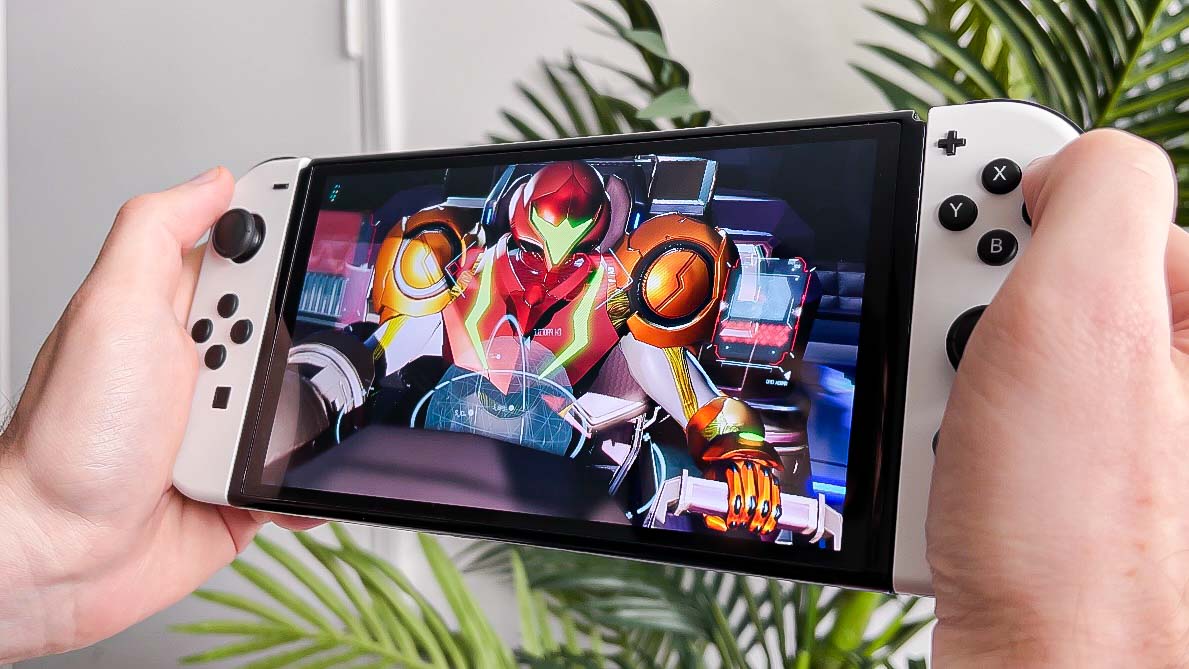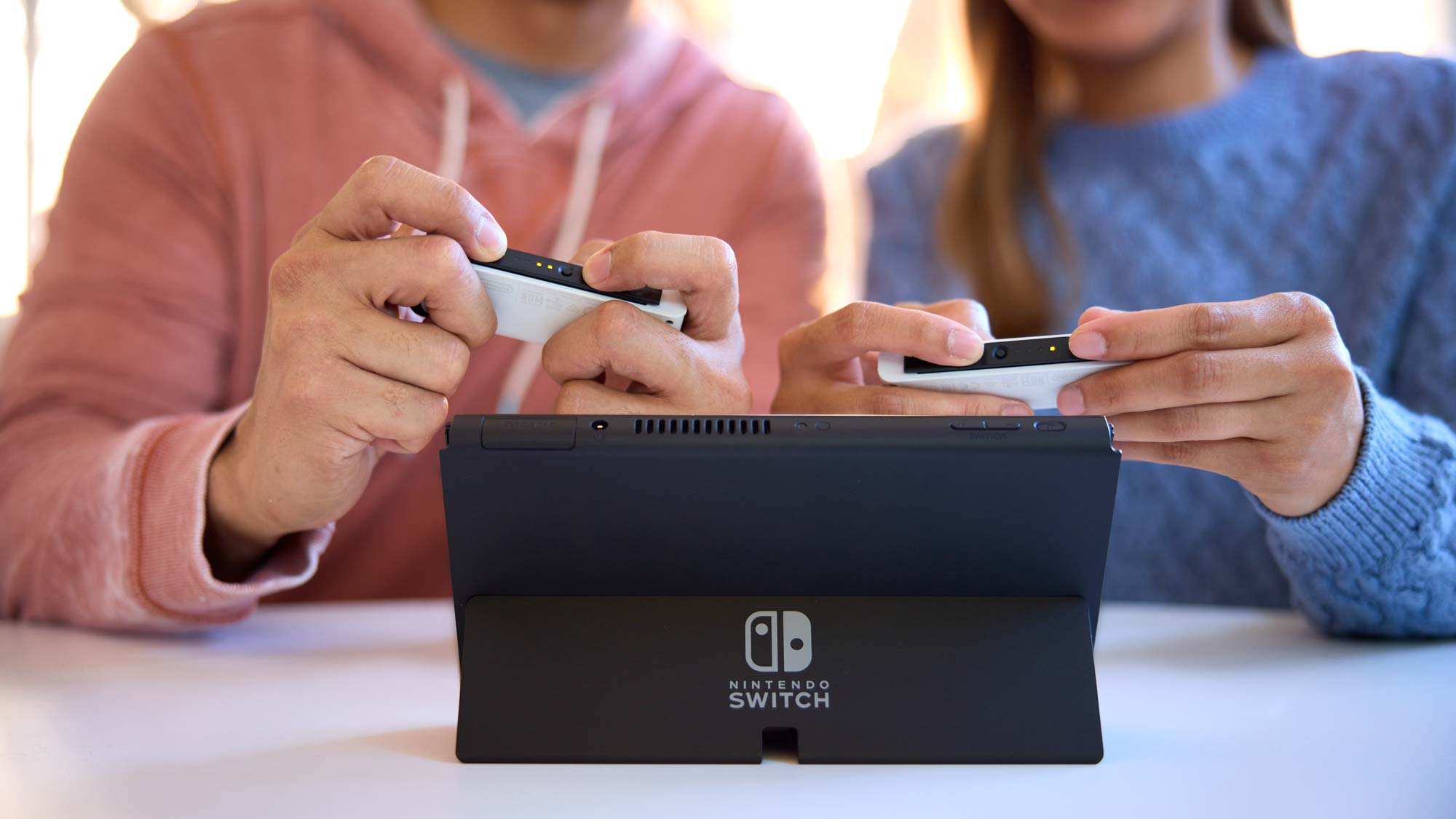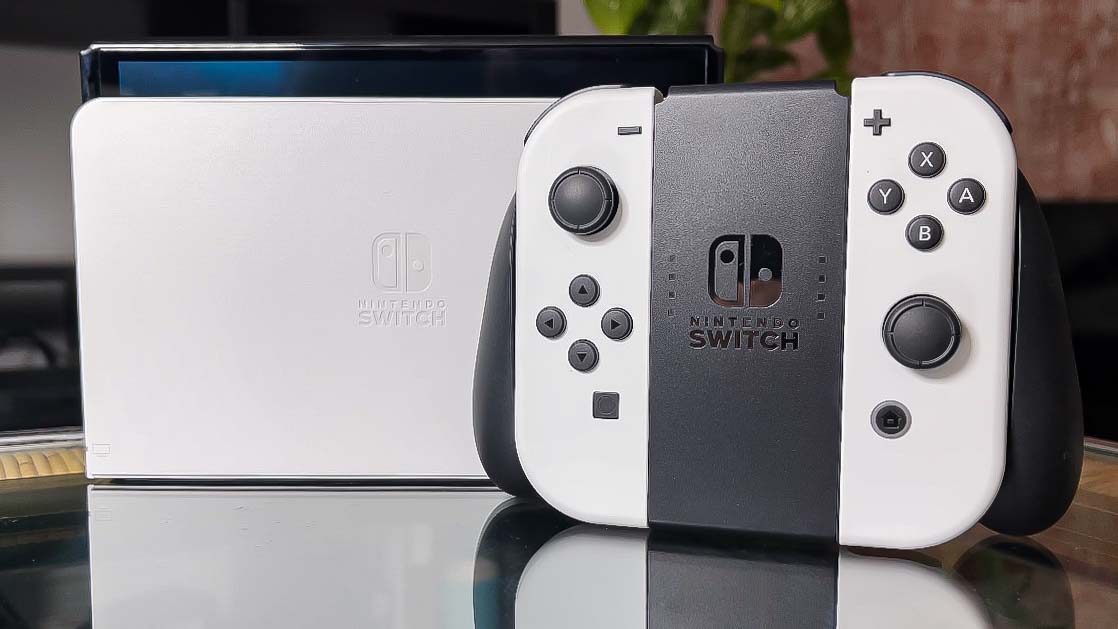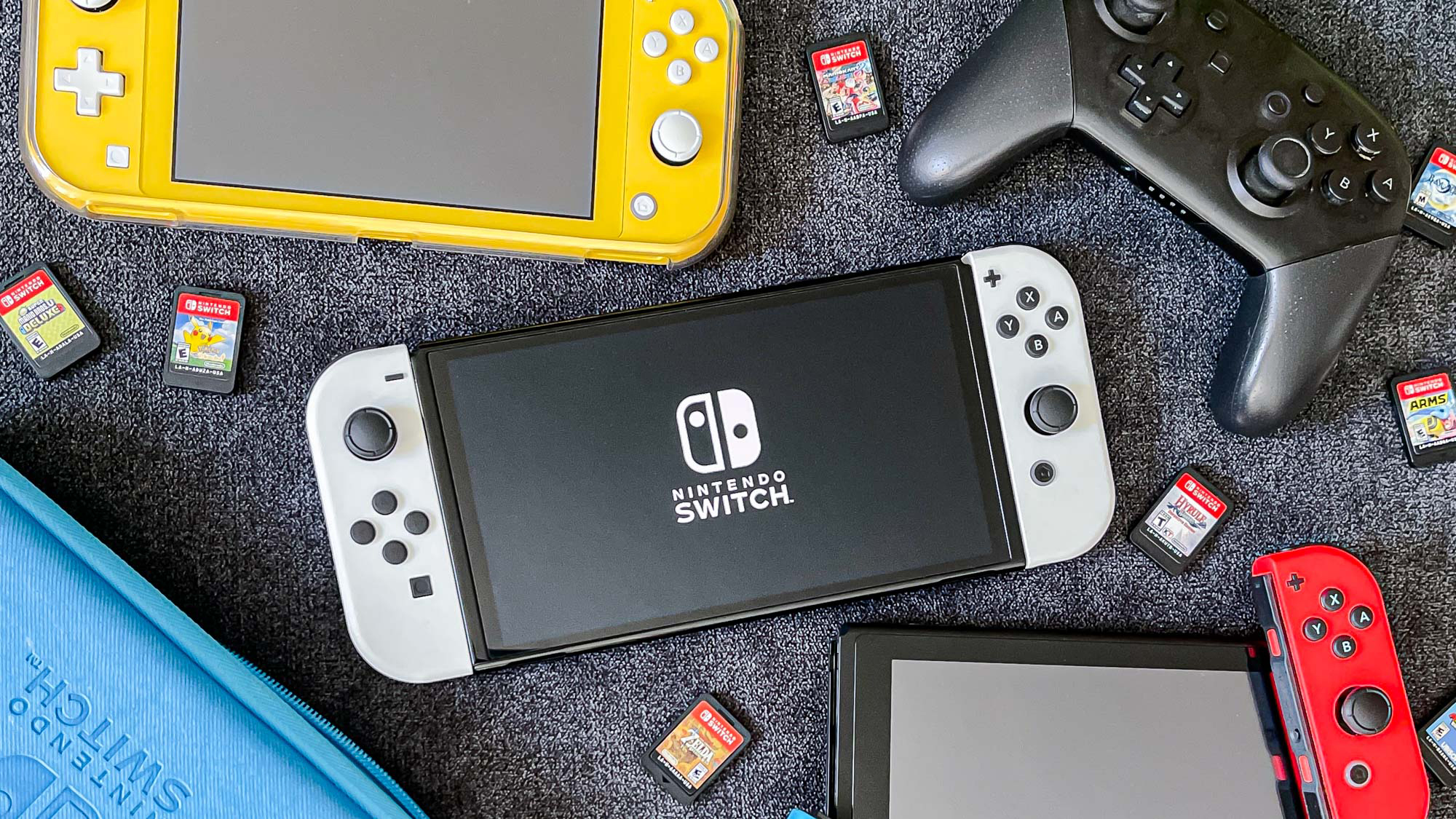The Switch OLED is good — but here's why you shouldn't upgrade
The Nintendo Switch OLED may not make sense for current Switch owners

The Nintendo Switch OLED has excited and perplexed fans in equal measure, ever since Nintendo announced it back in July. A new Switch model with a prettier OLED screen and a sturdier kickstand sounded useful. At the same time, a new Switch model without 4K output or improved performance seemed like a missed opportunity.
Now that the device is finally here, I think it’s fair to say that both arguments have merit. It’s just that the “missed opportunity” argument has more merit for current Switch owners.
First and foremost, if you haven’t read our Nintendo Switch OLED review, it's definitely worth a look. In it, I break down the Switch OLED’s strengths and weaknesses in great detail, from its superlative screen to its conservative components.
- Play the best Nintendo Switch games
- Learn where to buy the Nintendo Switch online
- Plus: Sorry Nintendo fans, the Switch OLED hasn't killed Joy-Con drift
If you don’t have time to read the whole thing right now, though, the bottom line is this: If you’re a first-time Switch buyer, you should buy the $350 Switch OLED instead of the $300 base Switch. If you already own a base Switch model, however, there’s no real reason to upgrade. I want to reiterate that point, because it could potentially save you, the reader, a good deal of money.
Nintendo Switch OLED upgrades

To review briefly, there are four main differences between the base Switch and the Switch OLED:
- The base Switch has a 6-inch LCD screen; the Switch OLED has a 7-inch OLED screen
- The base Switch has a small, flimsy kickstand; the Switch OLED has a large, sturdy kickstand
- The base Switch has small, workmanlike speakers; the Switch OLED has larger, more robust speakers
- The base Switch relies exclusively on Wi-Fi; the Switch OLED’s dock has an Ethernet port
I like all of these upgrades, and think that each one adds a tangible level of utility to the Switch. The screen makes games look better; the kickstand helps the console stand freely; the speakers provide better sound; and the Ethernet port helps download games faster.
At the same time, none of these made a night-and-day difference between the Switch OLED and the base Switch that I’ve been using for four years. A 6-inch LCD screen at 720p is not that different from a 7-inch OLED screen at 720p. The kickstand is only situationally useful, and the speakers are moot with a good pair of headphones. Plus, the Switch runs perfectly well on Wi-Fi.
When Nintendo first announced the Switch OLED, I saw a contingent of early adopters falling over themselves to be first in line for a pre-order. What’s unusual was that many of them already owned Switches.
If you’ve already pre-ordered the Switch OLED and it’s on its way to your house as we speak, there’s not much you can do. Go ahead and enjoy it, and I hope you can give your old Switch to a friend or family member in need.
If, on the other hand, the Switch OLED piqued your interest, but you weren’t sure whether you really needed another Switch in your life, I’m here to tell you that you don’t. The upgrades are marginal in handheld mode — and almost totally superfluous in docked mode. Once you hook the Switch OLED up to a TV, then the console’s screen, speakers and kickstand don’t factor into the equation anymore.
The perils of early adoption

At this point, I should take a moment and remind readers that your money is your own, and what you do with it is none of my business. If $350 won’t break the bank and you think a Switch OLED will bring you joy, then you should go ahead and buy one with my blessing. You’ll almost certainly enjoy the bigger, brighter, more colorful screen and the other small improvements.
Still, for any Switch owner who’s mulling over an OLED upgrade, I think it’s worth taking a step back and asking yourself why you want it. Is it because of the screen? That’s fair, but the new screen is still a 720p, 60 Hz display, which can’t help but feel limiting in a world of 4K consoles and QHD smartphones. That, and as I’m always keen to point out, your eyes will adjust to a pretty new screen faster than you might think.
As for the other three improvements, you can retrofit your existing Switch for relatively little money. The base Switch now supports Bluetooth speakers, so the OLED’s sound quality isn’t impossible to mimic. Plenty of third-party cases and kickstands help the base Switch stay upright. And you can get an Ethernet adapter for $30.
Psychologically speaking, getting a shiny new console is satisfying in a way that upgrading your old console simply isn’t. But, psychologically speaking, the happiness you get from buying expensive new things tends to diminish pretty rapidly. There’s a term in economics that's akin to this phenomenon: “marginal utility.” The more you use something, the more commonplace it becomes, and the less satisfaction you derive from it.
In other words: that Switch OLED may make you ecstatic for a week or so. After that, it’ll just be the machine you use to play Zelda, same as your last Switch.
Time for an upgrade?

There is admittedly one circumstance in which I might recommend a base-Switch-to-Switch-OLED upgrade — but I emphasize “might.” If you have a base Switch from 2017 or 2018, then your console has a weaker battery than the Switch OLED. (If you have a base Switch from November 2019 or later, then you have the same battery as the OLED.) Likewise, that three- or four-year-old Switch may have a weakened battery from continuous charging and recharging.
As such, if you can sell or trade in your current Switch at a decent margin, then the Switch OLED upgrade may be worthwhile for the battery life alone.
But, again, this really depends on how you use your Switch, and whether a battery upgrade is worth $150 or more. In our testing, a well-used launch model Switch got 3 hours and 29 minutes of battery life; a Switch OLED got 5 hours on the dot. An hour and a half of extra battery may not be that much of a difference, particularly if you don’t often venture far from power outlets. Similarly, you can get a pretty good portable charger for much less than $150.
In short, there are a few marginal cases where it might make sense for current Switch owners to upgrade to a Switch OLED. However, I think the Switch OLED, in general, makes a lot more sense for newcomers to the Switch family. This way, you can save your money for a more robust Switch Pro upgrade, which we’ll hopefully get sooner rather than later.
Sign up to get the BEST of Tom's Guide direct to your inbox.
Get instant access to breaking news, the hottest reviews, great deals and helpful tips.
Marshall Honorof is a senior editor for Tom's Guide, overseeing the site's coverage of gaming hardware and software. He comes from a science writing background, having studied paleomammalogy, biological anthropology, and the history of science and technology. After hours, you can find him practicing taekwondo or doing deep dives on classic sci-fi.

